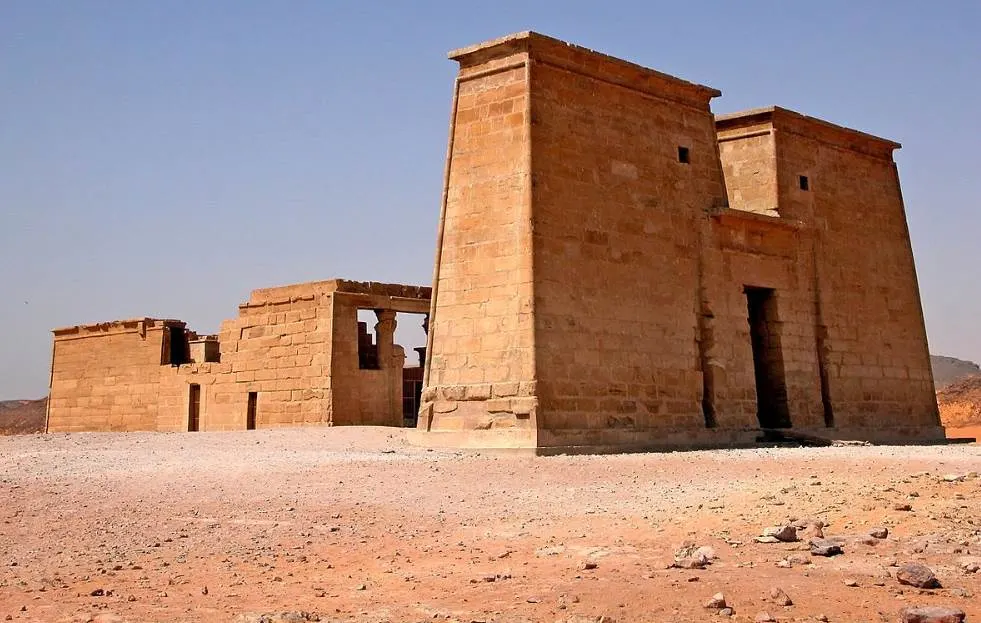When you think about landmarks in Egypt, the first visions that surely come to mind are amazing pyramids in the middle of a desert landscape, right?
While these fascinating structures that were built thousands of years ago still captivate our imagination, some of the most impressive structures that were built in ancient Egypt are vast temple complexes.
These were built for several reasons, including as a mortuary temple or in honor of one of the many deities that were worshiped back then.
Let’s take a closer look at some of the most famous temples in Egypt, structures that can hold a candle to the likes of the Great Pyramid of Giza or the Red Pyramid (to name just a few iconic structures).
1. Temple of Hatshepsut
The Temple of Hatshepsut is one of the most fascinating buildings ever constructed in Egypt for several reasons. It was built as a mortuary temple for Queen Hatshepsut, a female Pharaoh of the Eighteenth Dynasty (1550-1292 B.C.).
Her successor, Thutmose III, erased most of the references to her from the building for reasons that remain a mystery up until this day.
The temple was carved out of the rocks on the western bank of the River Nile, right across the city of Luxor in the southern part of Egypt.
It’s a huge structure in the vicinity of the Valley of the Kings and Valley of the Queens and has a length of 273.5 meters (897 feet), a width of 105 meters (344 feet), and an approach with a length of over 1,000 meters (3,300 feet).

2. Karnak Temple Complex
The Karnak Temple Complex is a huge archaeological site that consists of various temples, chapels, and a large number of iconic pylons. It’s located just north of Luxor on the opposite bank of the River Nile of the Temple of Hatshepsut.

The man who initiated the construction of this vast complete was a man named Senusret I who lived in the 20th century B.C. He was a member of the Twelfth Dynasty of ancient Egypt.
The construction would eventually last until the Ptolemaic Kingdom, the final dynasty to rule over Egypt before it became another province of the Roman Empire.
Today, the complex is one of the most popular tourist attractions in the country and has been designated as a UNESCO World Heritage site since 1979.
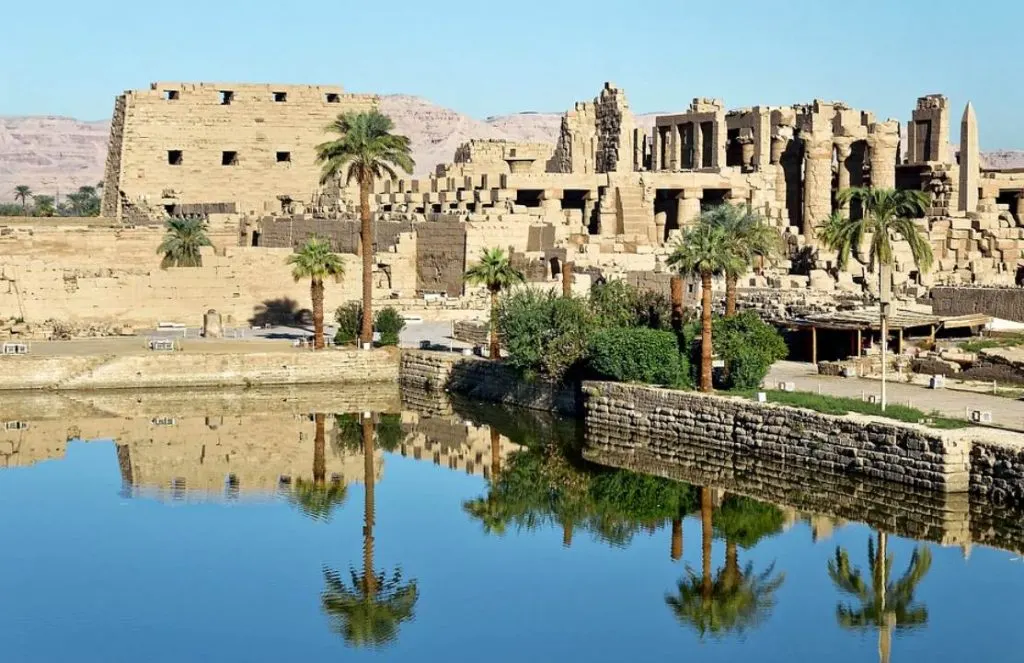
3. Luxor Temple
Just south of Karnak, in what is now the modern-day city of Luxor, you can find the Luxor Temple, another vast temple complex on the east bank of the River Nile.
Luxor was the ancient Egyptian city of Thebes and used to be the capital of Egypt during extended periods during the Middle Kingdom and the New Kingdom.
One of the most remarkable facts about Luxor Temple is that it wasn’t dedicated to a particular deity or Pharaoh. Instead, it’s assumed it was used as the ceremonial location to crown the new Pharaoh.
The temple is remarkably well-preserved as well, mainly because it was used as the center of government of this part of the Roman Empire. It was also transformed into a Christian church.
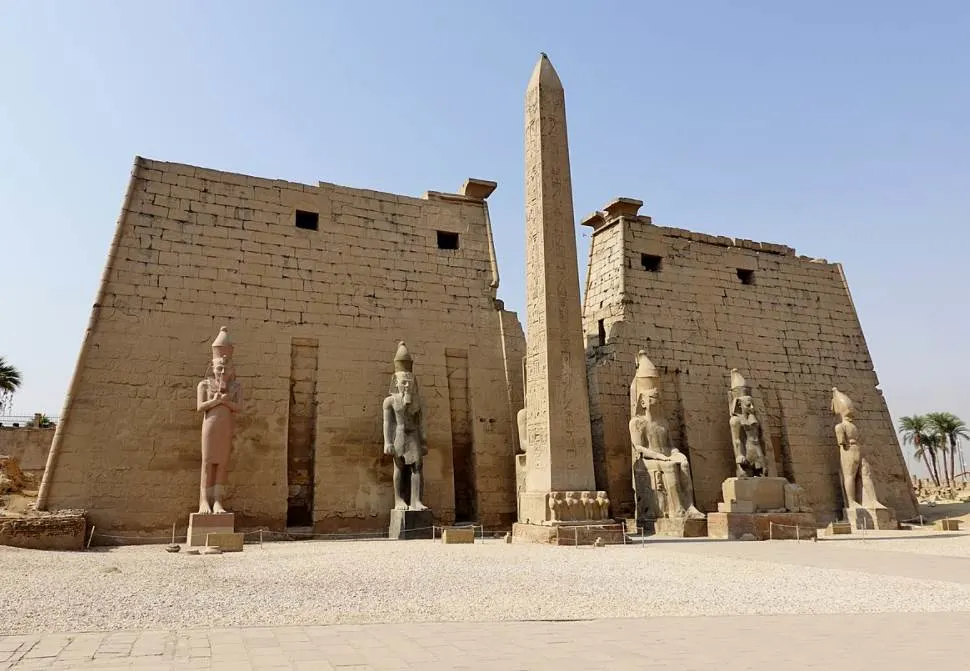
4. Abu Simbel
Abu Simbel is a small town located in the utmost southern part of Egypt near the border with Sudan. It’s world-famous for its two massive rock-cut temples.
These two temples feature immense statues of Pharaoh Ramesses II and his wife Nefertari along with their children. It’s assumed it was constructed in honor of his glorious victory in the Battle of Kadesh which took place in 1274 B.C.
These temples can be found on the western bank of Lake Nasser, an artificial lake that was formed with the construction of the Aswan Dam.
What’s astounding about the Abu Simbel temple complex is that it was cut into pieces and completely relocated to a higher position before the dam was completed. This project started in the 1960s and ensured the temples didn’t submerge because of the dam.
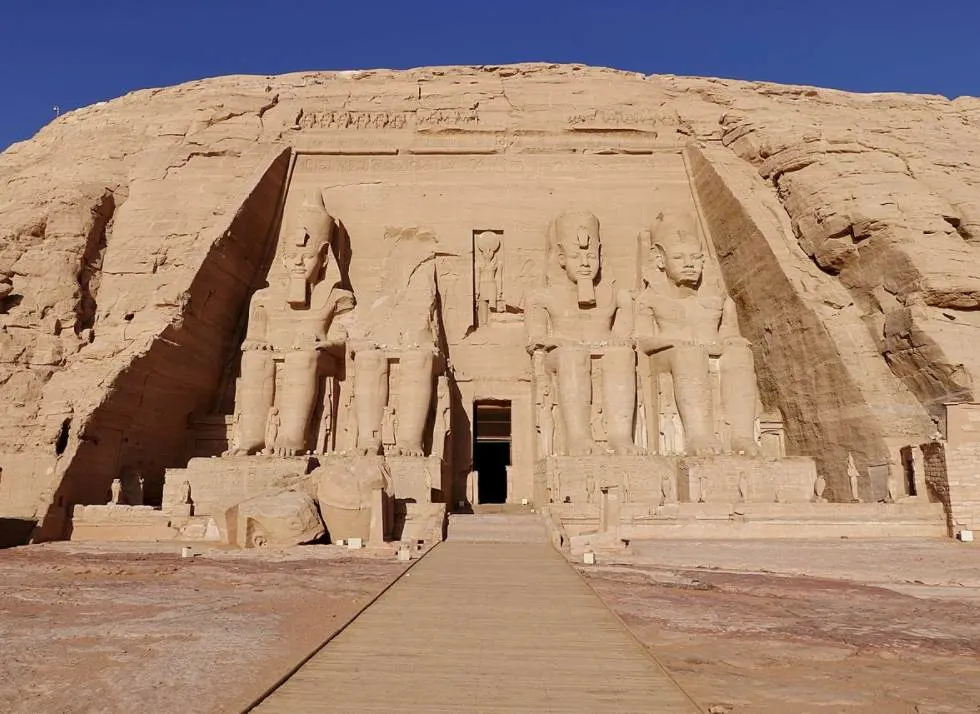
5. Temple of Horus at Edfu
The Temple of Horus at Edfu is located in the small village of the same name on the western bank of the River Nile. It is situated right in between Luxor and Aswan in southern Egypt.
It’s considered to be one of the best-preserved temples in Egypt. It was built during the Ptolemaic Kingdom and took quite a bit of time to build between 237 and 57 B.C.
The temple was dedicated to Horus, one of the most important deities of ancient Egypt. He was considered the counterpart of the Greek god Apollo and many inscriptions refer to him as such on the temple’s walls.
Apart from the reasonably well-preserved layout of the temple, these inscriptions are also what make this particular one of the most famous temples in Egypt today.
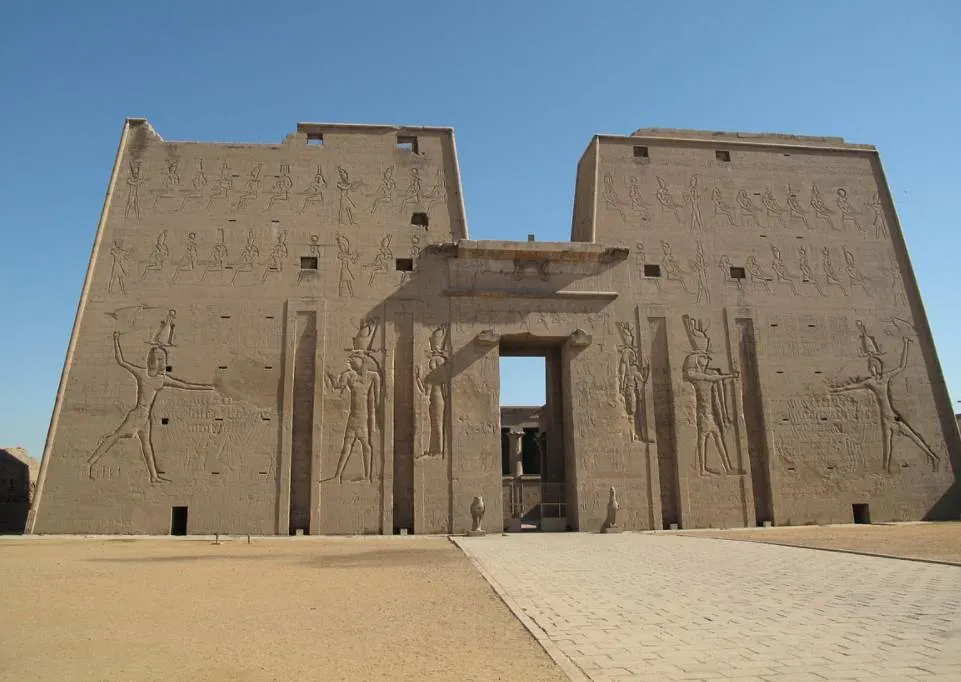
6. Medinet Habu
Medinet Habu is an archaeological site that is also known as the “Temple of Ramesses III.” It’s located on the western bank of the River Nile on the opposite side of the city of Luxor and just south of the Valley of the Kings.
The temple has a very similar layout to the Temple of Horus at Edfu and many other similar famous temples in Egypt even though it was built much earlier during the New Kingdom.
It’s about 150 meters (490 feet) long and also features remarkable inscriptions on its walls. Most prominently those refer to the defeat of the Sea Peoples during the reign of Ramesses III.
Even though we can see what happened, which is the Sea Peoples invading and subsequently being defeated, it remains unclear until today who these mysterious seafaring warriors were.
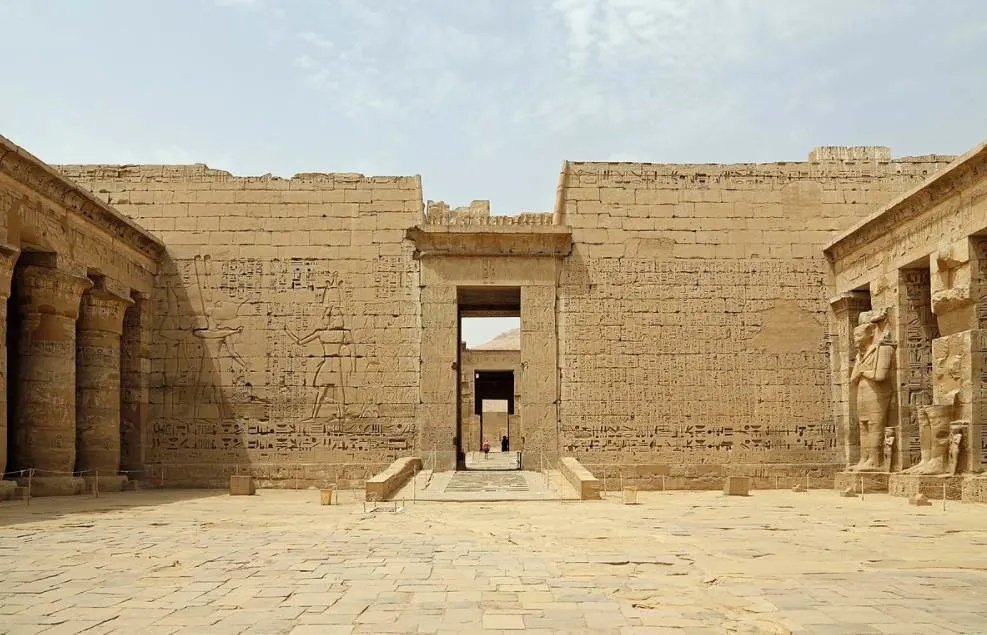
7. Philae
Philae is the common name of an island that is home to a vast temple complex dedicated to the goddess Isis. This is yet another complex that was moved during the 1960s project conducted by UNESCO.
The original island was already flooding frequently following the completion of the Aswan Low Dam in 1902. There was no other way to relocate the temple complex one stone at a time.
The fact that the temple complex is located on an island makes it one of the most fascinating temples in Egypt. Most of the structures date back to the Ptolemaic Kingdom even though about 1/3 of the structures already existed back then.
The main reason why such a large temple complex was constructed on such a small island was that it was believed that this island was the burial place of Osiris, the god of fertility, agriculture, and the afterlife.

8. Temple of Kom Ombo
The Temple of Kom Ombo was named after the town it is located in. Kom Ombo is situated in the Aswan Governate of Egypt as well, not too far north of the city of Aswan in the southern part of the country.
It’s another large-scale building project conducted during the Ptolemaic Kingdom as it was constructed between 180 and 47 B.C. on the site of a former temple built during the New Kingdom.
What’s remarkable about this famous temple in Egypt is that it has a dual nature. This means that two sets of gods were worshipped here, both local deities and gods that were worshipped throughout Egypt.
This dual nature is reflected in the fact that the temple consisted of two sections. Both sides of the temple feature the same rooms and halls, a unique feature in ancient Egyptian architecture.
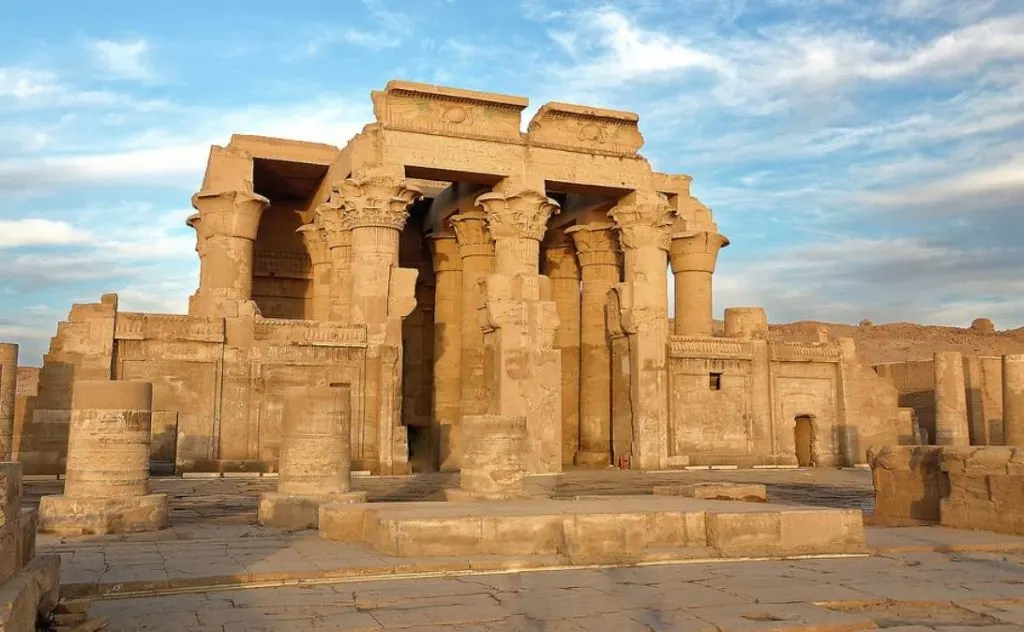
9. Temple of Dendur
The Temple of Dendur was originally located in a small village about 80 kilometers (50 miles) south of the city of Aswan in southern Egypt. Today, it’s one of the most fascinating attractions at the MET in New York City.
It’s one of the temples that was part of the huge UNESCO project to preserve multiple famous Egyptian Temples before the construction of the Aswan Dam, a project that created the huge artificial Lake Nasser.
Because of the involvement of the United States Government in this project, the relatively small temple was offered as a gift to the United States by the Egyptian government at the time.
This remarkable temple was commissioned by Caesar Augustus, the first emperor of the Roman Empire, and completed around 15 B.C. It was part of his propaganda campaign which means he is depicted on the walls of the structure multiple times.
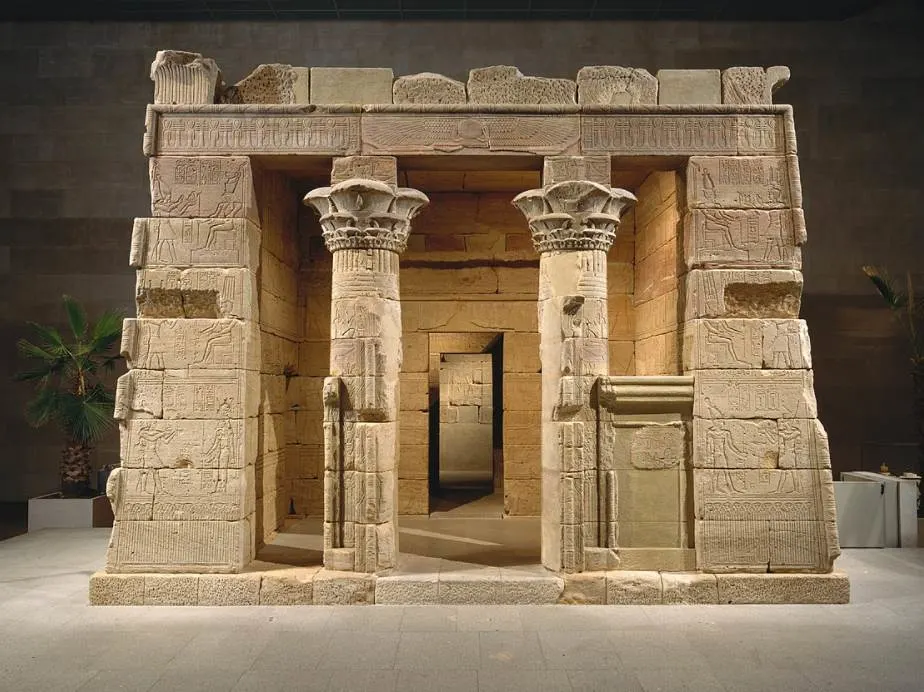
10. Temple of Kalabsha
The Temple of Kalabsha is yet another famous temple in Egypt that was moved as part of the massive relocation project conducted in the 1960s. It was originally located in a small village called Bab al-Kalabsha about 50 kilometers (31 miles) south of Aswan.
Today, it’s located just near the Aswan High Dam on a small island just south of the large city in southern Egypt. It’s one of the greatest Nubian temples in Egypt and features a large number of amazing reliefs.
The temple was built during the final years of the Ptolemaic Dynasty around 30 B.C. and was expanded during the reign of the first Roman Emperor Augustus. It was later expanded during the reign of Vespasian as well and transformed into a church when Christianity became the number 1 religion.
The relocation project was led by a German team and the Egyptian government offered Germany one of the entrance gates as a gift. This gate has been on display in Germany since 1977 and will serve as one of the entrance gates of the Pergamon Museum in Berlin.

11. Temple of Dakka
The Temple of Dakka is a temple located in Lower Nubia, the northernmost part of the region of Nubia. It’s situated in between Aswan and the magnificent temple complex of Abu Simbel.
The temple had fairly humble beginnings as it was commissioned by a Kushite King named Arqamani in the 3rd century B.C. The Ptolemaic Dynasty that ruled over Egypt around this time helped a hand and the temple was gradually expanded in the following centuries.
What’s fascinating about this temple is that it was greatly expanded during the Roman Empire as well. Both first Roman Emperor Augustus and his successor Tiberius expanded the temple by adding an additional sanctuary and a curtain wall.
The Temple of Dakka was one of the multiple temples that were located by UNESCO during the 1960s. It’s now majestically overlooking Lake Nasser instead of being submerged by it.
